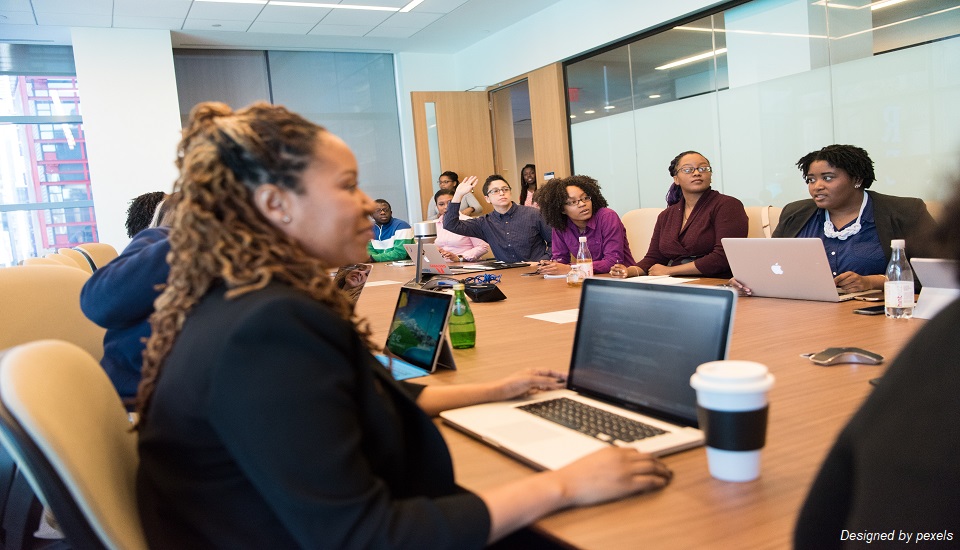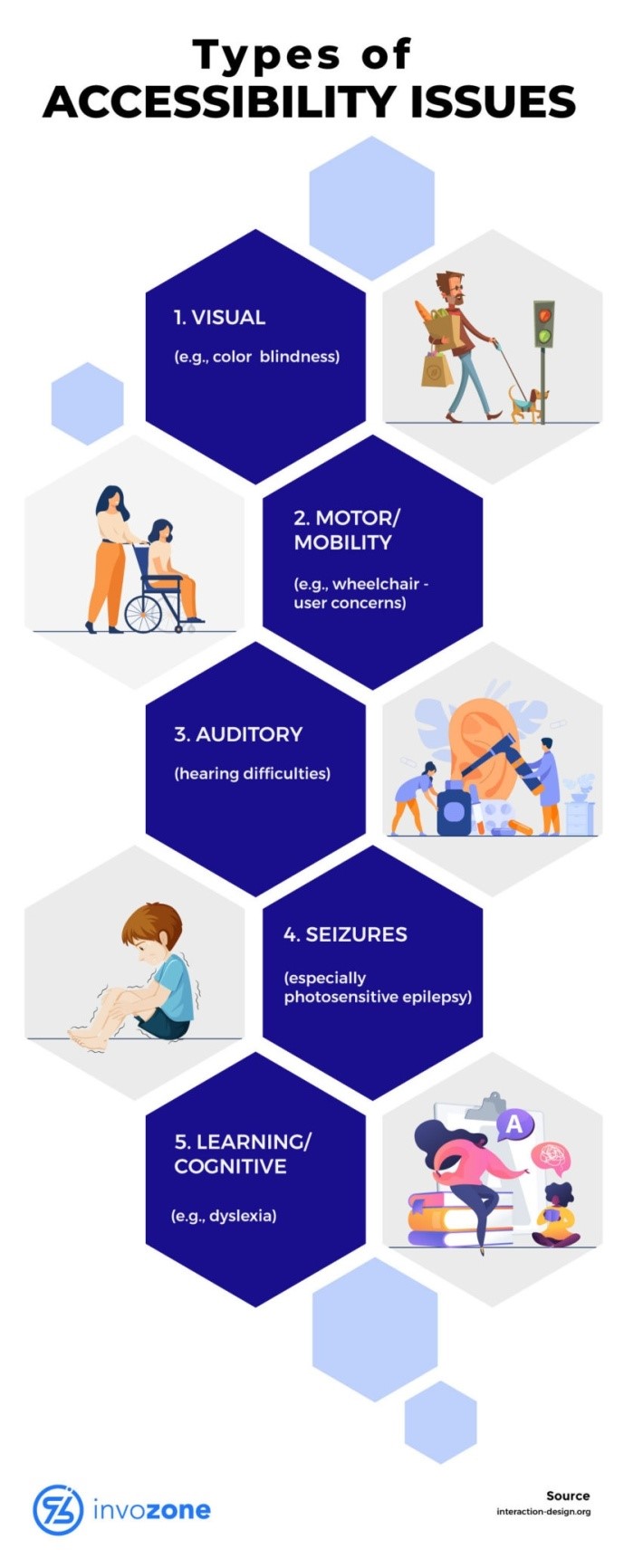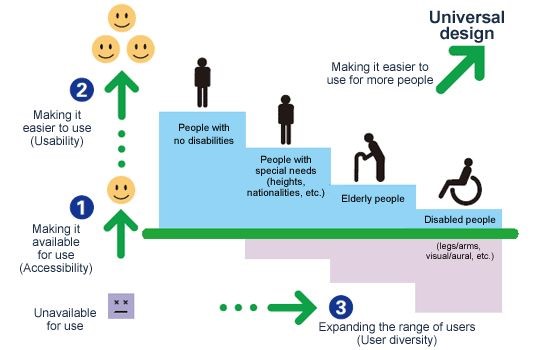Accessible Training- Things To Take Into Account While Creating An Inclusive Program
15th March 2023

Research reveals that 20-25% of our population involves people with disabilities and 80% of the working people with disabilities are looking for a job.
In today’s world, accessibility is a crucial aspect of creating an inclusive environment for all individuals. This includes designing and creating accessible training programs that can accommodate individuals with disabilities or limitations. Accessibility should be considered right from the start of designing training programs, and it is important to ensure that the training materials and delivery methods are suitable for all learners, regardless of their abilities.
4 Types Of Accessibility Issues Faced By Employees
 Source: invozone.com
Source: invozone.com
That being said four areas need to be considered while designing accessible training.
- Physical Accessibility
Try to consider both in-person and virtual environments while designing your programs and also take into account the physical disabilities of your employees who are attending the program if any.
- Cognitive Accessibility
Here make sure that your programs are flexible and support a variety of mediums as some disabilities can be hidden and be respectful of the fact that everyone learns at a different speed.
- Auditory Accessibility
Develop scripts in advance for your auditory-deficient employees and make them readily accessible before the training commences. Also, have ASL services for your hearing-impaired employees for better learning opportunities.
- Visual Accessibility
For your visually impaired employees try to incorporate more imagery, motion, or graphics, and make sure to make the document as detailed as possible and easy to read.
Tips To Build An Accessible Training Program

Source: access.ecs.soton.ac.uk
Here are some tips to consider while designing an accessible training program:
- Content Accessibility
The content of the training program should be accessible to everyone. This means that the language should be clear and concise, with minimal use of technical jargon or acronyms. Where possible, visual aids such as diagrams, charts, and videos should be used to enhance understanding. For individuals with visual impairments, providing text descriptions of visual content and providing audio descriptions can make a significant difference. Transcripts should be made available for video content so that individuals who are deaf or hard of hearing can access the content.
- Delivery Method Accessibility
The delivery method of the training program should be flexible enough to accommodate all learners. This means that the training should be delivered in multiple formats, such as video, audio, and text-based materials. This allows learners to choose the format that works best for them. Additionally, providing closed captions or subtitles for video content and providing transcripts can make a significant difference for individuals who are deaf or hard of hearing.
- Assistive Technology Compatibility
Assistive technology refers to any technology or equipment that helps individuals with disabilities to access information or perform tasks. When designing training programs, it is important to ensure that the materials are compatible with common assistive technologies such as screen readers, magnifiers, and voice recognition software. For example, designing materials in HTML or PDF format can make it easier for individuals with visual impairments to access the content using screen readers.
- Navigation and Interactivity
The training program should be designed with clear navigation and interactivity. This means that learners should be able to easily move between different sections of the program, and interactive elements such as quizzes or exercises should be included to keep learners engaged. Additionally, providing clear instructions and feedback can help learners understand the material better.
- Sensory Considerations
Individuals with sensory sensitivities or limitations may require additional considerations when designing accessible training programs. For example, individuals with autism may be sensitive to bright lights or loud sounds, so the training program should avoid using these elements unnecessarily. Similarly, individuals with epilepsy may be sensitive to flashing lights, so any visual content should be designed with this in mind.
- Cultural Considerations
Cultural considerations should also be taken into account when designing accessible training programs. This means that the training should be designed with cultural diversity in mind, and should avoid using language or examples that may be offensive or exclusionary to certain groups. Additionally, providing translated versions of the training materials can help individuals whose first language is not English to access the content.
- Feedback and Support
Finally, it is important to provide learners with feedback and support throughout the training program. This means that learners should be given regular opportunities to ask questions and provide feedback, and support should be available in the form of online forums, email, or chat. Additionally, providing opportunities for learners to connect with other learners or instructors can help to create a sense of community and support.
Don’t Wait, Support Your Employees Now!
Designing accessible training programs is essential for creating an inclusive environment that accommodates individuals with disabilities or limitations. By considering these areas, training programs can be designed to meet the needs of all learners, regardless of their abilities. Since most employees will not be very comfortable disclosing their disabilities, consider pursuing a Professional Post Graduate Diploma in Train the Trainer to gauge them better and design your content accordingly.
Written By : Laura Taylor






